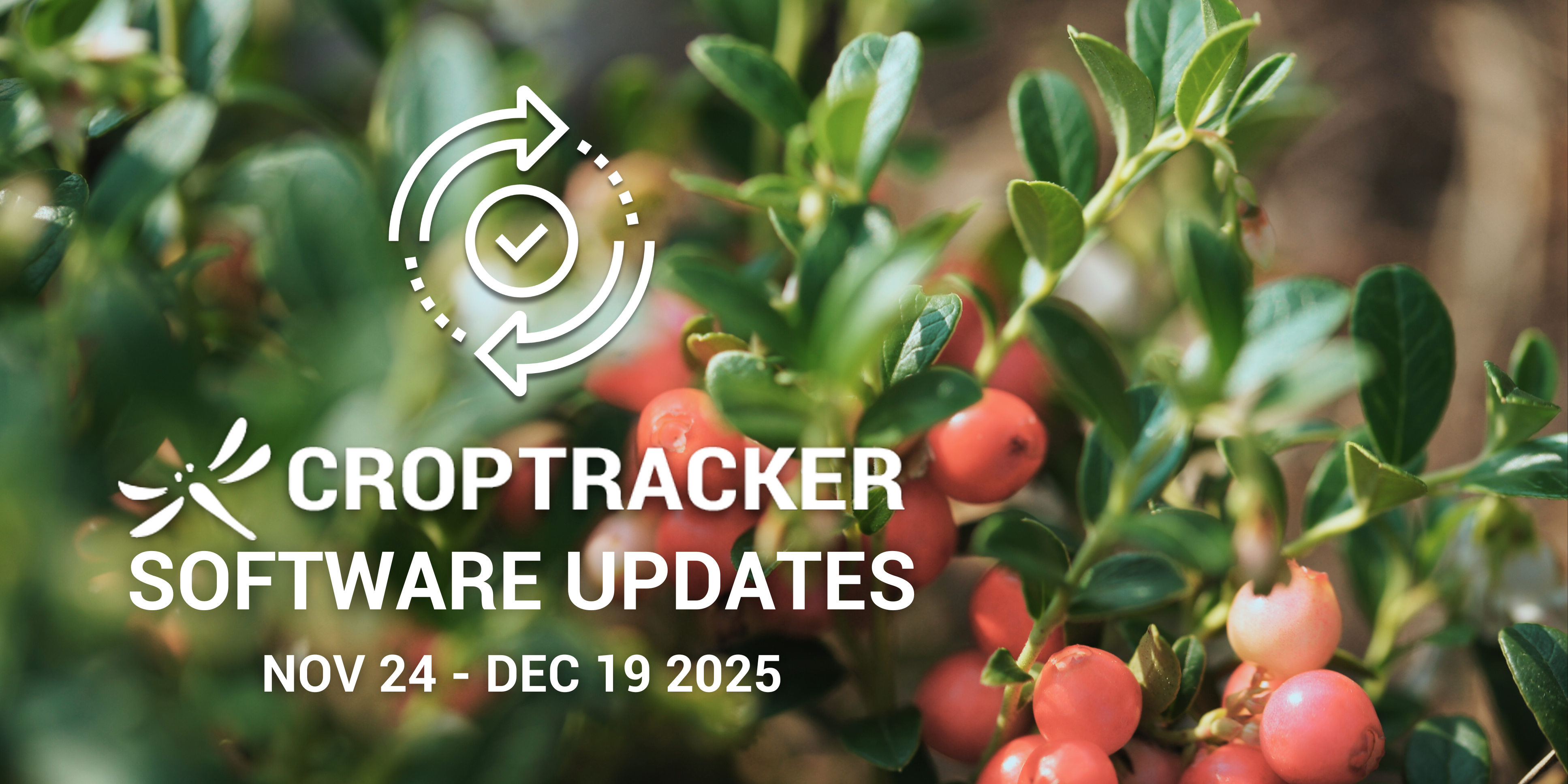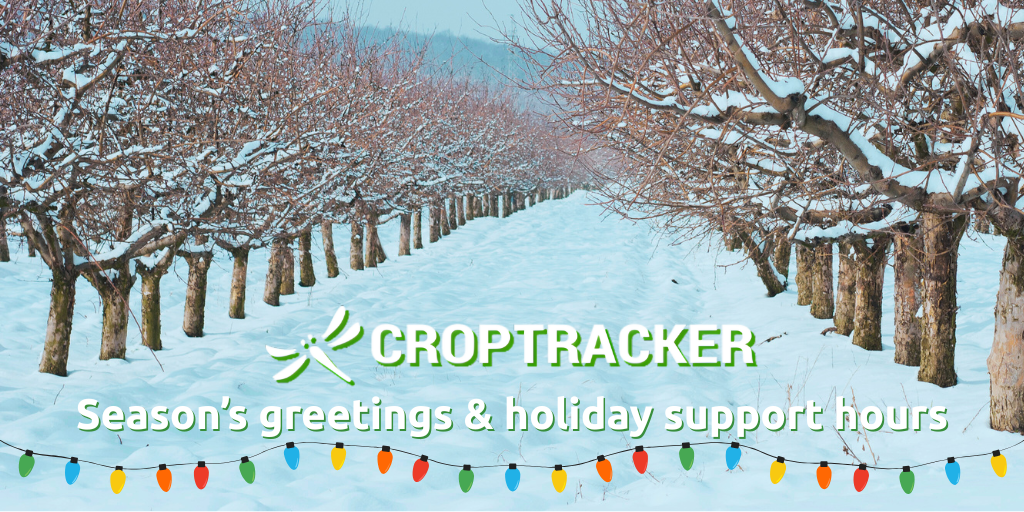
This software updates blog covers features and fixes from November 24th through December 12th, 2025. Ensure your Croptracker mobile app is up to date to take advantage of these updates. Read on to learn more and get in touch with us at support@croptracker.com for more information.
In today's highly regulated agricultural landscape, tracking fertilizer applications by the brand name and application rate alone is no longer sufficient for comprehensive nutrient analysis or environmental impact reporting. With combination fertilizers, juggling multiple active ingredients can feel like guesswork. Fortunately, Croptracker's Spray module and Active Ingredient tracking features are built to eliminate that uncertainty.

The year is quickly coming to a close, and we at Croptracker want to take a moment to thank all our incredible growers for another successful season. We deeply appreciate your partnership and dedication to the agricultural community. We wish you and your families a safe, restful, and joyful holiday season!

A grower’s responsibility for their produce does not end when harvest is done. Although the work to grow and harvest fresh produce takes months (or in the case of the pineapple - years), it is really only half of the battle. The second half of the work is the fast paced work of produce sales. Making sure the harvest reaches a dinner plate before it spoils is also a huge amount of work.
Let our expert staff walk you through the Croptracker system, and answer any questions you have.
We are here to help.